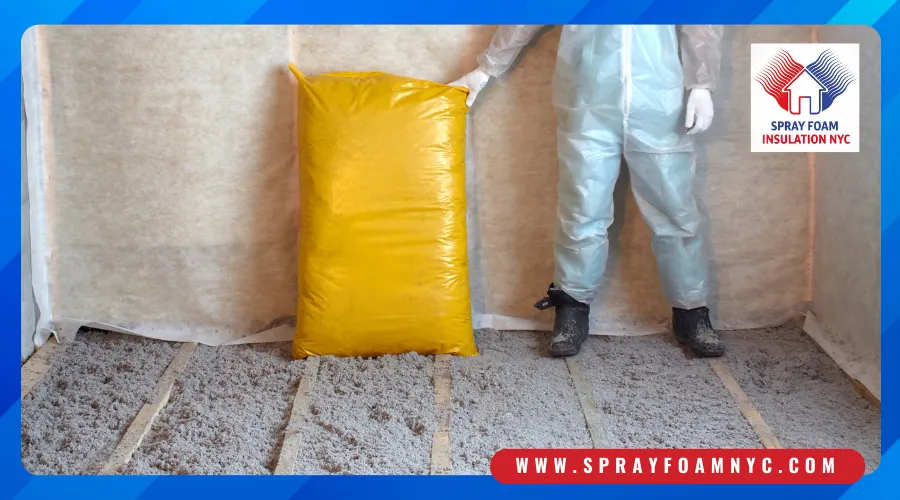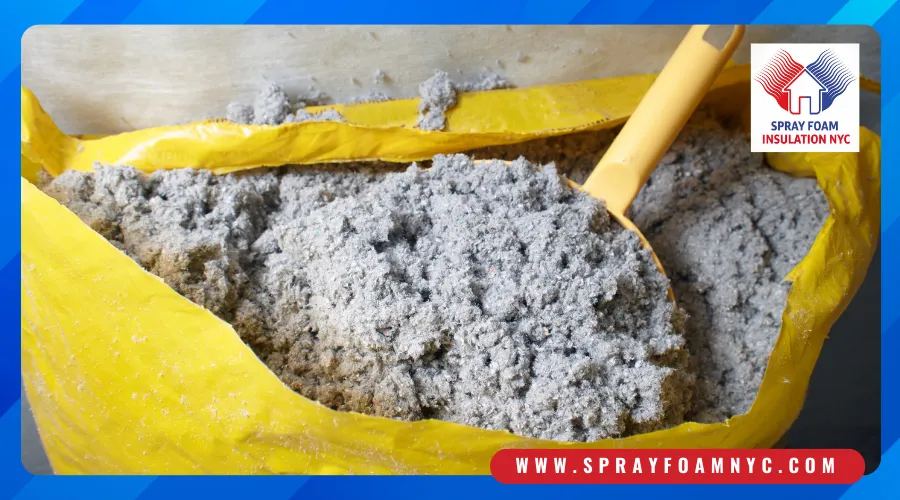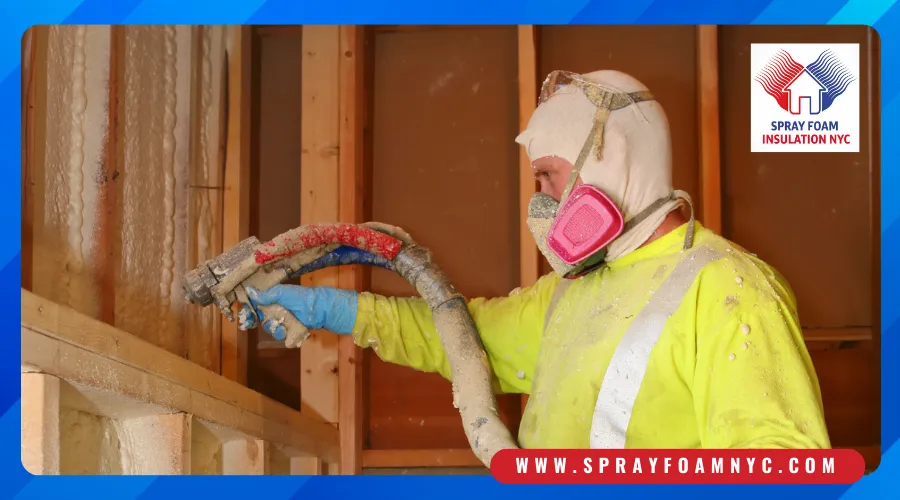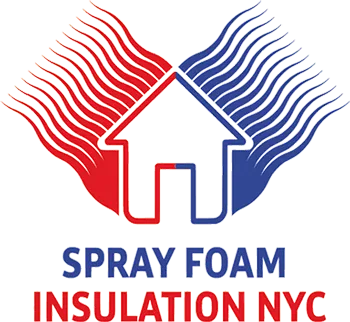
If you’re looking for an affordable cellulose insulation service in New York, you’re in luck! Spray Foam Insulation NYC offers top-quality insulation services for homeowners and businesses throughout the New York area and surrounding neighborhoods.
Cellulose insulation is an eco-friendly and cost-effective insulation solution that’s made from recycled paper products. It’s a great option for those looking to reduce their environmental impact while also saving money on energy costs. Additionally, cellulose insulation has excellent sound-dampening qualities and can help reduce noise pollution in your home or business.
Cellulose insulation is treated with fire retardants to reduce its flammability, but it can still pose a fire hazard if it is not installed correctly. If cellulose insulation is installed too close to heat sources, such as recessed lighting fixtures or chimneys, it can ignite and spread quickly.
Cellulose insulation is made from paper products, making it an attractive food source for pests such as rodents and insects. Pests can burrow through the insulation, reducing its effectiveness and causing damage to the structure of the home.
Cellulose insulation can pose health concerns if it is not installed correctly. Dust from the insulation can irritate the lungs and cause respiratory problems, especially for individuals with allergies or asthma. Cellulose insulation can also harbor mold and other allergens, which can exacerbate health problems.

When it comes to installing cellulose insulation, there are several steps involved in the process. Here’s a breakdown of the typical methodology for cellulose insulation installation:
The first step is to assess the area where the insulation will be installed. This includes measuring the space, identifying any air leaks or gaps, and determining the appropriate amount of insulation needed.
Next, the area is prepared for installation. This may include sealing any gaps or leaks, installing vents or baffles, and preparing the insulation equipment.
The cellulose insulation is then installed using specialized equipment, such as a blowing machine. The insulation is blown into the space, filling gaps and creating a dense layer of insulation.
After the insulation is installed, the area is inspected to ensure that it has been properly filled and there are no gaps or leaks. Any necessary finishing touches, such as installing covers for recessed lighting fixtures, are also completed.
Overall, the installation process for cellulose insulation is relatively quick and easy, making it a popular choice for homeowners and businesses. However, it’s important to hire a professional insulation contractor to ensure that the installation is done correctly and safely. A professional can also help determine the appropriate R-value for your insulation, as well as identify any additional steps that may be necessary to maximize energy efficiency and comfort.
Plumbing and drain problems can be a hassle to deal with, and it’s important to have a trusted professional who can get the job done quickly and efficiently. In this article, we’ll explore the reasons why Rosily Plumbing and Drain is the right choice for all your plumbing and drain needs.
One of the most common uses for cellulose insulation is in attics. It can be blown in to fill gaps and create a dense layer of insulation, helping to prevent heat loss in the winter and heat gain in the summer.
Cellulose insulation can also be used in walls to improve energy efficiency and soundproofing. It can be blown into wall cavities or installed using a wet spray method.
For homes with vaulted or cathedral ceilings, cellulose insulation can be blown in to provide additional insulation and improve energy efficiency.
Cellulose insulation can be used in new construction projects to improve energy efficiency and reduce environmental impact.
For older homes or buildings that have existing insulation, cellulose insulation can be blown in on top of the existing insulation to improve energy efficiency.
Overall, cellulose insulation is a versatile and cost-effective option for improving energy efficiency and reducing environmental impact in a variety of applications. If you’re interested in installing cellulose insulation in your home or business, contact a trusted insulation contractor to learn more about the options available to you.

When it comes to insulating your home, there are a variety of options available. From fiberglass to spray foam, each type of insulation has its own benefits and drawbacks. However, one type of insulation that is gaining popularity in recent years is cellulose insulation. Often associated with attics, cellulose insulation has a variety of uses beyond just attic insulation. Here are some of the advantages and disadvantages of using cellulose insulation:
Cellulose insulation is made from recycled paper products, making it a sustainable and environmentally friendly option.
Cellulose insulation has a high R-value, which means that it’s highly effective at reducing heat transfer and improving energy efficiency.
Cellulose insulation has excellent sound-dampening qualities, making it a great option for reducing noise pollution.
Cellulose insulation is often less expensive than other types of insulation, making it a great choice for those on a budget.
When it comes to insulating your home, there are a variety of options available. From fiberglass to spray foam, each type of insulation has its own benefits and drawbacks. However, one type of insulation that is gaining popularity in recent years is cellulose insulation. Often associated with attics, cellulose insulation has a variety of uses beyond just attic insulation. Here are some of the advantages and disadvantages of using cellulose insulation:
Contact us today to schedule your Cellulose Insulation appointment.
Cellulose insulation is made from recycled paper products, such as newspaper or cardboard. The paper is treated with fire retardants and other chemicals to make it resistant to fire, pests, and mold.
Cellulose insulation is typically installed using specialized equipment that blows the insulation into the space to be insulated. The installation process may vary depending on the application, but generally involves assessing the space, preparing it for installation, and blowing in the insulation.
Cellulose insulation has several benefits, including its eco-friendliness, energy efficiency, sound-dampening qualities, and cost-effectiveness. It can also be used in a variety of applications, such as attics, walls, and ceilings.
Cellulose insulation is often less expensive than other types of insulation, such as spray foam or fiberglass. It also has a high R-value, making it highly effective at reducing heat transfer and improving energy efficiency. However, it may not be as effective in some applications, such as in areas with high moisture or humidity.
Cellulose insulation is generally safe when installed properly. However, it can be a potential fire hazard if not treated with fire retardants or installed correctly. Additionally, it can retain moisture, which can lead to mold growth if not addressed properly. It’s important to hire a professional insulation contractor to ensure that the installation is done correctly and safely.
Yes, cellulose insulation is an environmentally friendly option for insulation. It’s made from recycled paper products and doesn’t contain harmful chemicals or compounds. Additionally, it can help reduce energy consumption and lower carbon emissions by improving energy efficiency.
The lifespan of cellulose insulation can vary depending on a variety of factors, such as the installation method and environmental conditions. Generally, cellulose insulation can last for up to 20-30 years or more if installed correctly and maintained properly. It’s important to have your insulation inspected periodically and topped off if necessary to ensure maximum effectiveness.

Whatever your insulation requirements are, we can help. Spray Foam Insulation NY offers solutions for all types of residential and commercial projects,
Request a Free Spray Foam Quote
Once you’ve submitted your request, we will contact you within 24 hours
(or the following business day for requests sent Friday – Sunday).
Get a free spray foam insulation quote today
and start saving up to 45% on your energy bills!
Spray Foam Insulation NYC is a locally owned licensed insulation company that has insulation solutions for any project and can meet your client’s insulation requirements. We serve the New York City, Queens, Brooklyn, Staten Island, Manhattan, NJ areas.
Copyright © 2023 Spray Foam NYC. All Rights Reserved.
Privacy Policy • Made with 🤍 by Spray Foam NYC